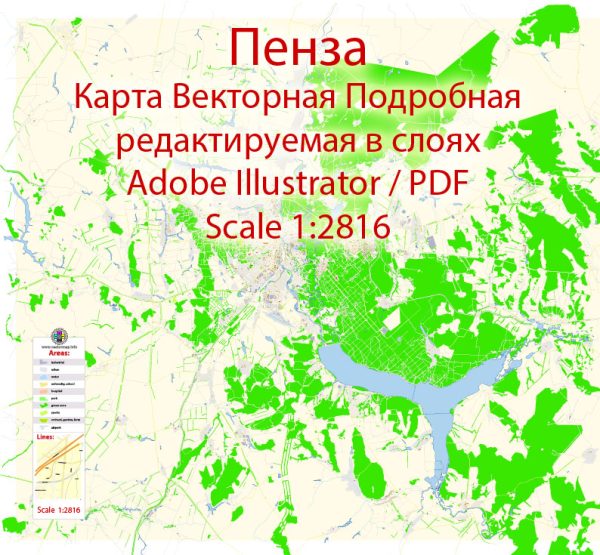Penza, located in western Russia, is the administrative center of Penza Oblast. Its history of urban development reflects the broader historical and cultural shifts of the region.
- Foundation and Early History: Penza was founded in 1663 as a fortress on the southeastern borders of the Russian state. Its establishment was part of the defensive strategy against nomadic tribes and the desire to expand Russian influence into the territories of the Volga River. The fortress served as a military outpost and played a role in securing Russian control over the region.
- 18th Century: During the 18th century, Penza grew as a trade and administrative center. The town’s development was influenced by its strategic location on the trade routes connecting Moscow with the Volga region. Penza became a significant hub for trade, contributing to its economic growth.
- 19th Century: The 19th century marked a period of industrialization and cultural development for Penza. The construction of railways and the expansion of industries contributed to the city’s economic prosperity. The city also saw the establishment of educational and cultural institutions, enhancing its social and intellectual life.
- Soviet Era: The Soviet era brought further industrialization and urbanization to Penza. The city became an important industrial center, with the development of manufacturing and heavy industry. Urban planning during this period reflected the principles of socialist city development, with an emphasis on communal living spaces and public infrastructure.
- Post-Soviet Period: The collapse of the Soviet Union had both positive and challenging impacts on Penza. The city faced economic difficulties due to the restructuring of industries, but it also embraced market-oriented reforms. The post-Soviet period saw a mix of economic challenges and new opportunities for development.
- Modern Times: In recent years, Penza has focused on modernizing its infrastructure, promoting tourism, and preserving its historical and cultural heritage. Efforts have been made to enhance the quality of life for residents, improve public spaces, and attract investment.
- Architectural Heritage: Penza boasts a blend of architectural styles, reflecting its historical evolution. There are examples of traditional Russian architecture, Soviet-era structures, and modern developments. Notable landmarks include cathedrals, government buildings, and historic neighborhoods that provide a glimpse into the city’s rich past.
- Cultural and Educational Institutions: Penza is home to various cultural and educational institutions that contribute to its vibrant atmosphere. The city has museums, theaters, and educational establishments that play a crucial role in shaping its cultural identity.
Overall, Penza’s history of urban development showcases its journey from a strategic fortress to a bustling center of trade, industry, and culture. The city continues to evolve, facing the challenges of the modern era while preserving its historical character.


 Author: Kirill Shrayber, Ph.D.
Author: Kirill Shrayber, Ph.D.